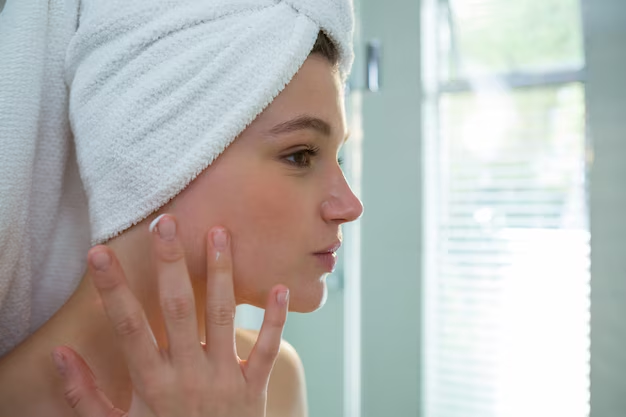Discover Effective Ways to Address Fungal Acne and Reclaim Clear Skin
Fungal acne may not be as widely discussed as its bacterial sibling, but for those affected, it can be just as frustrating and perplexing. With similarities to traditional acne yet distinct differences, tackling fungal acne requires special insights and care. Fortunately, it’s possible to understand this condition better and take informed steps to regain clear and healthy skin. Here we delve into comprehensive strategies to manage fungal acne, making the process as straightforward and achievable as possible.
Understanding Fungal Acne
What Is Fungal Acne?
At a glance, fungal acne resembles traditional acne: clusters of small, uniform pimples that pop up primarily on the forehead, chest, and upper back. However, the underlying cause is quite different. Unlike bacterial acne, which is primarily caused by clogged pores, fungal acne is driven by the growth of yeast on the skin. This yeast, known as Malassezia, belongs to the fungal family and lives on everyone’s skin. When it multiplies excessively, it results in the distinctive breakouts associated with fungal acne.
Why Does It Matter?
Recognizing the difference between fungal and bacterial acne is crucial because each requires a different approach to treatment. Without understanding these nuances, many individuals end up using treatments that are ineffective against fungal acne, which can prolong discomfort and skin distress.
Causes and Triggers of Fungal Acne
Environmental Factors
Fungal acne thrives in warm, humid environments. Whether it’s tropical climates or sweat-inducing workouts, conditions that promote moisture accumulation can spur the overgrowth of Malassezia.
Key Triggers:
- Heavy sweating
- Tight, non-breathable clothing
- Prolonged humidity exposure
Lifestyle and Habits
Certain personal care and lifestyle choices can also lead to an increase in fungal acne. Excessive oiliness on the skin, encouraged by certain skincare products, can provide a nutrient-rich environment for yeast.
Lifestyle Elements:
- Overuse of heavy moisturizers or oils
- Infrequent showering, especially post-exercise
- Diets high in sugar that may influence yeast growth
Identifying Fungal Acne: Key Characteristics
Spotting the Differences
Distinguishing between fungal acne and bacterial acne can be a game-changer. Fungal acne typically presents as clusters of itchy, small, and uniform papules. In contrast, bacterial acne often features a mix of blackheads, whiteheads, and cysts of varying sizes.
Indicators of Fungal Acne:
- Consistent, same-sized bumps
- Itchiness on affected areas
- Predominantly located on the upper body
Treatment Approaches for Fungal Acne
Over-The-Counter Solutions
For those dealing with mild cases, several OTC treatments can effectively reduce fungal acne symptoms by targeting the yeast overgrowth directly.
Focus Ingredients:
- Selenium sulfide: Often found in dandruff shampoos, selenium sulfide can help reduce yeast levels on the skin.
- Zinc pyrithione: Also contained in certain anti-dandruff shampoos, this compound has antifungal properties.
- Salicylic Acid: Though it’s renowned for its use against traditional acne, it can help exfoliate the skin and restore balance to areas affected by fungal acne.
Home Remedies
Exploring natural remedies can be beneficial, especially for those who prefer less chemical-intensive solutions. While these options can be comforting and soothing, it’s important to approach them as complementary and consult with a dermatologist for persistent issues.
Natural Aids:
- Tea Tree Oil: Known for its antifungal properties, tea tree oil can be diluted and applied to the affected areas.
- Apple Cider Vinegar: With natural acidity that may assist in restoring skin pH, diluted apple cider vinegar is used by some people to cleanse and tone the skin.
Professional Treatments
When OTC medications and home remedies fall short, dermatological interventions can be worthwhile. Knowing when to turn to a professional ensures efficient and safe treatment.
Medical Options:
- Antifungal Oral Medications: A medical professional may prescribe these if overgrowth is severe.
- Topical Antifungals: Prescription-strength creams or gels specifically target the yeast responsible for fungal acne.
Prevention and Maintenance
Adopting a Skin-Friendly Routine
Consistently maintaining a skin care routine that discourages yeast proliferation is paramount. Opt for lightweight, non-comedogenic products that complement oily or acne-prone skin.
Daily Habits:
- Shower promptly after sweating to prevent yeast from thriving.
- Select clothing made of breathable fabrics that keep moisture at bay.
- Incorporate gentle, pH-balanced cleansers.
Supportive Dietary Choices
Although diet is a secondary factor, it can still influence the condition. A well-rounded diet that minimizes sugar and processed foods can bolster skin health.
Dietary Tips:
- Reduce intake of sugary and high-carb foods.
- Incorporate probiotics to ensure a balanced gut flora.
The Psychological Impact of Fungal Acne
Addressing Self-Confidence
While the focus is often on physical healing, it’s essential to acknowledge the emotional toll skin conditions can have. Ensuring mental well-being through support systems, community connections, or professional counseling can be invaluable.
Building Emotional Resilience
Engaging in activities that boost self-esteem and offering self-compassion can aid in navigating the psychological challenges that come with fungal acne.
Embracing Your Skin’s Health Journey
Every skin journey is personal, and managing fungal acne effectively leans heavily on understanding your unique conditions and needs. By empowering yourself with knowledge, trying various treatment paths, and seeking professional advice when necessary, you can make informed choices that lead to clearer skin and boosted confidence.
Quick Fungal Acne Toolkit: Your Go-To Resource 🌟
- 🎯 Identify Quickly: Look for small, itchy, uniform pimples on your upper body.
- 🛒 OTC Arsenal: Use products with selenium sulfide or zinc pyrithione.
- 🌿 Embrace Nature: Try diluted tea tree oil or apple cider vinegar for mild cases.
- 👕 Dress for Success: Choose breathable clothing to keep your skin yeast-free.
- 🥗 Eat Smartly: Limit sugar and include probiotics in your diet.
- 🧘♀️ Cultivate Positivity: Practice self-love and resilience techniques.
